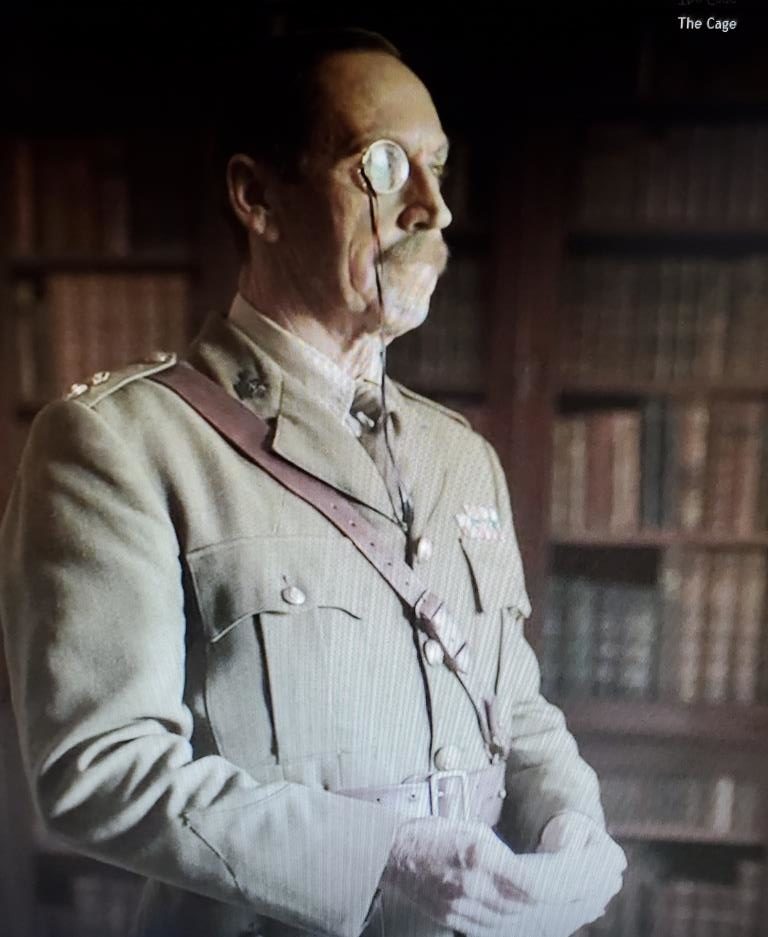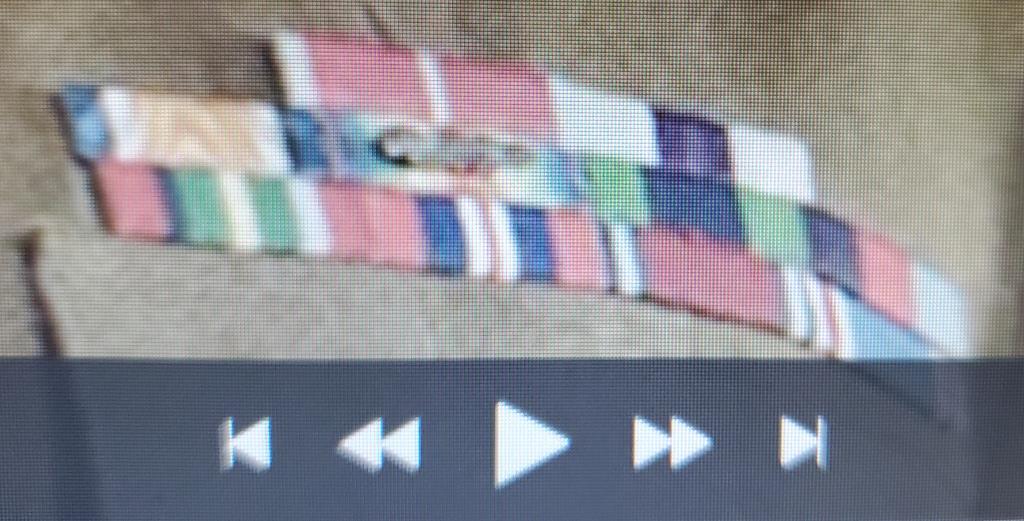For several years now, I have been trying to have a look at an episode from Foyle’s War. The episode, entitled “The Cage”, apparently aired in Season 7 of the extremely popular UK TV series. One would think that the episode would have been relatively easy to track down, but living in North America makes it a tad more tricky. And living in Canada makes it even trickier!
Acorn TV has the series, but only if you live in the USA. Canadians with an Amazon Prime membership cannot view the series either. I finally tracked it down on iTunes, paid $18.99 for the three episodes of Season 8 (also known as Set 7, not Season 7) and watched “The Cage” a few days ago. I can tell you right now, I’m hooked on the series!
The reason I wanted to watch “The Cage” was because it has a reference to Tin-Eye Stephens. Given his rather murky portrayal in the 1980 series Spy! – Camp 020, I wanted to see, with my own eyes, how he was portrayed in Foyle’s War.
Summary
First off, let’s say that the reference to Stephens is quite loose. The character, Lt. Col. Harry Galt, is a tall-lean, older officer with a moustache and a rod up his spine. The episode is set in the post-war era, 1946-1947, and focuses on Russian agents. Galt is the commander of a supposed Y-station (gathering radio intelligence) at Barton Hall, a manor house out in the countryside. The radio side of things is just a cover for the more sinister purpose of Barton Hall, interrogating suspected foreign agents in the basement of the building. The interrogation techniques are not always without violence. As Galt eventually tells Foyle later in the episode (1hr09min mark): “We are developing new interrogation techniques, the intelligence we extract is passed directly to MI5. You see, violence can often result in the wrong answers — a good interrogator seeks the truth without resorting to brutality.” That last sentence could have come out of Stephens’ mouth but is countered by the fact that we later see Galt participating in the interrogation and torture (water-boarding) of a Russian agent.

The other aspect of Lt. Col. Galt that connects with Stephens is that he pulls a monocle out of his pocket to read a message that arrived by courier. Unlike Stephens, Galt does not have the monocle wedged in his eye continuously but only pulls it out for reading purposes. Galt is apparently known as “Tin-Eye” by the prisoners but this reference is really the only concrete connection with Stephens.
To my eye, the character of Lt. Col. Galt also incorporates several aspects of Lt. Col. Alexander Scotland, commandant of the infamous London Cage. Barton Hall shares similarities to Latchmere House (Camp 020) but also to the building in London that housed the London Cage. It was the basement of the London Cage where the torture of prisoners took place. Scotland was apparently quite proud of the brutal techniques used in the London Cage.
One could also see some aspects of Bad Nenndorf in the episode. For instance, when Major MacDonald tells Foyle that Galt let some of the men have their way with the prisoners. Whether this is the truth is another matter since MacDonald is trying to throw Foyle off the scent. Later, we see one of the guards, without any officers present, pull a bound prisoner out of his cell and perform a mock execution. This sort of behaviour was well documented at Bad Nenndorf, less so at Camp 020.
I was a bit fascinated by Galt’s medal ribbons and had a go at deciphering them. I was unable to grab screenshots of the episode (iTunes must have some serious protection settings) but did take a few pics with my smartphone.

From what I can tell, the medals are as follows (top to bottom and left to right). The ones marked with a ** were awarded to Stephens.
-
- ** OBE (military)
- Military Cross
- ** British War Medal (1914-1918)
- WW1 Victory Medal with oak leaf (Mentioned in Dispatches)
- ** India General Service Medal
- ** 1939-45 Star
- Pacific Star
- ** War Medal (1939-1945)
- 1935 Jubilee Medal
- 1937 Coronation Medal
Clearly the character of Galt is only loosely based on Stephens, but it is interesting that the character, and the episode, have never been linked with Lt. Col. Alexander Scotland and the London Cage. Even the name of the episode, “The Cage” hearkens back to Scotland’s interrogation centre. While there were other “cages” run by the Prisoner of War Interrogation Section (PWIS), Camp 020 was not one of them.
Review
I thoroughly enjoyed this episode, the first one I’ve ever watched in the Foyle’s War series. I was a bit lost on the history of the various characters, but that didn’t really detract from the story line itself. The only problem (if it is one) is that I want to watch the entire series!
P.S.
Thanks to David Tremain for identifying the medal with the oak leaf!

This was a superb programme and ran for eight series. The writer Anthony Horowitz attempted in most episodes to incorporate aspects of WW2 not widely known, for example the ‘Cage’ issue, and get all period details as correct as possible. In polls here in the UK to find the TV programme viewers would most like to see revived ‘Foyle’s War’ always comes top. “The London Cage” by Helen Fry is pretty good account of the goings on at the interrogation centres and the debates that surfaced over methods. https://www.amazon.co.uk/London-Cage-History-Britains-Interrogation/dp/0300238657/ref=sr_1_1?crid=33OUKBFUNOJ4G&keywords=london+cage&qid=1644490027&sprefix=london+cage%2Caps%2C67&sr=8-1
Hi John,
Thanks for the comment. Here, across the pond, Foyle’s War isn’t half as well-known. We have, however, heard of Coronation Street… I’ve read Fry’s book and Scotland’s original as well. I am going to have to go back and watch all of the episodes… I’m addicted now… sigh.
Thanks!
Giselle
Interesting article on Camp 20 here, including a photo(s) of Stephens.
http://www.coldspur.com/camp-020r-at-huntercombe/
Hi John,
Yes, I came across Tony’s site a while ago. I posted some additional pictures from Peter’s collection in this post… https://josefjakobs.info/2021/04/the-many-faces-of-robin-wg-stephens.html
Fascinating photos!
Giselle
Hello Giselle
Foyle’s war is a gem and I’m glad you’ve found it. The DVDs of the entire run can be had from Amazon and elsewhere. Well worth watching.
I have long enjoyed Foyle’s War. The intricate plots, excellent acting and extremely well written and well paced scripts. Not much shouting but a lot of genteel civility. Not to mention the clothes!
When I saw that episode, The Cage, I thought the writer, Anthony Horowitz, had drawn on the Tin Eye visage, but also the historical reality of the London Cage and its commandant, Lt Col A P Scotland. It was essentially a torture site.
In the Foyles War episodes set after the War, Foyle joins MI5, which is where that episode is set. There he meets again Hilda Pierce (he met her in an early episode or two where they crossed swords). Miss Pierce was a member of SOE. The Miss Pierce character is inspired by Vera Atkins of SOE fame. There is an episode, set in the post war period, Elise, which I suspect is inspired loosely by the Prosper Affair / Affaire Dericourt, in which an SOE réseau was penetrated and many members captured and killed. Dericourt was working for both SOE and it seems, German intelligence. And possibly MI6. It is quite a rabbit hole.
All the episodes of Foyles War was inspired by real events and more than one, events in the secret services. The is one episode where the head of MI5 is thought a traitor. I suspect the historical basis of this is the four decade hunt for a reputed Soviet mole “Elli” and the allegations against an MI5 DG, Roger Hollis (which have never been substantiated).
Back to Lt Col Scotland. In September 1940, Guy Liddell, director of MI5’s counterintelligence B Division, said that he had been told Scotland had punched a prisoner at MI5’s Camp 020. Liddell was horrified.
Scotland, like Lt Col Stephens, had a very adventurous life, prior to WWII. At one stage he served in the German army from 1903 to 1907, and was involved in intelligence work against the Imperial Germans, possibly during that time and definitely after it and up until 1914, when he was imprisoned by them on account of their suspecting him of espionage.
His life was used as inspiration for a 1957 movie, The Two-Headed Spy, upon which Scotland was technical advisor. Scotland wrote an account of the interrogation centre, The London Cage and I think there may have been other books as well.
All in all, if I had to invite Stephens or Scotland to tea, I think I would definitely prefer the former.
Hi Giles,
I can’t believe it’s taken me this long to watch the series. But now I see what all the fuss is about!
Thanks for the info, I have a vague recollection of the SOE business. Nasty stuff. I’ve read Scotland’s book – quite fascinating but I agree… I’d rather have Stephens to dinner… think he would be more fun. I’ll have to look up The Two-Headed Spy. I also seem to recall that Liddell was under suspicion when the Cambridge 4 (or 5) defected – he had been such good friends with many of them.
Thanks!
Giselle
Just saw this, Giselle.
I have been a fan of the series for ages, and watched most of it when it first came out. (Michael Kitchen is brilliant.) But I don’t recall the Cage episodes. However, I did acquire all the DVDs last year, so will now turn back to them. Thanks for the reminder!
Hi Tony,
You’re welcome!
Giselle